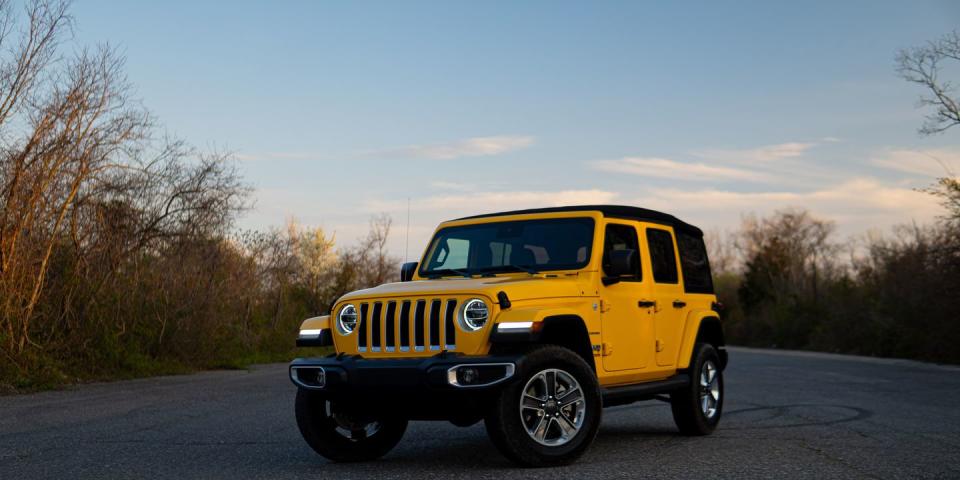Your Jeep Doesn’t Need $20,000 in Options to Be Great

I'm a fan of simple automotive joys. Of cars with purpose. Consider the Miata, where civility is pared away to allow engagement. Or the Miata's inverse, the Lincoln Town Car, where everything stiff, sporty, or generally annoying was sacrificed for comfort. You'd assume Jeeps fit, too.
But it's not that simple with the current Wrangler. At a glance, I do love the iconic Jeep. The Wrangler buzzes like a wasp's nest on the highway, it's suspension careening over potholes with little interest in comfort or self-preservation. The interior feels substantial and chunky, built for easy cleaning and operation with gloves. The Wrangler's tires are gigantic, knobby, and ready from the factory for serious trail work. The Jeep allows you to summit mountains, drop its doors, ford streams, and ditch its roof. Anything to make you, the off-roading buyer, engaged in the experience of wheeling. Everything else on the truck is tinsel.
Yet those unnecessary add-ons can double the price. And more and more, checking every box seems to be the norm. The last Wrangler I drove, an Unlimited Sahara model with the diesel engine, stickered for $53,325. Last year, I had a Wrangler Rubicon with the eTorque four-cylinder powertrain that was even pricier: $56,765. For a Jeep. Spring for the diesel and other options and it's possible to get a $60,000 SUV that still doesn't have power seats.

Now, I have nothing against loading up a vehicle with goodies. A fully-kitted Ram 1500 does an entirely passable impression of a luxury sedan, while also towing your boat. But for cars like the Wrangler, where glory is derived from the vehicle's simplicity, excess fat is sinful.

 Yahoo Autos
Yahoo Autos 